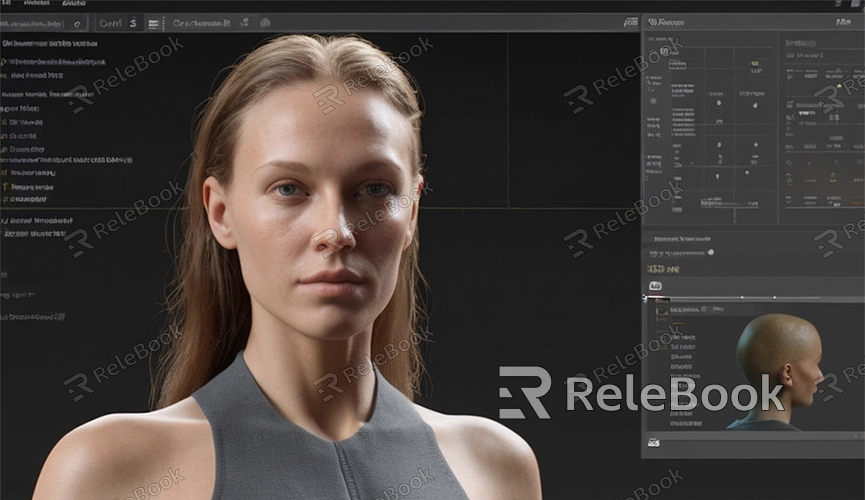How to 3D Model a Person in Blender
3D modeling is a blend of art and technology, with character modeling being a crucial aspect in this field. Whether you're creating characters for games, animation, or virtual reality projects, mastering the skills of character modeling is essential. This article will detail how to model a person in 3D using Blender, seamlessly integrating this sentence into the process: "If you need high-quality 3D textures and HDRI for modeling and virtual scenes, or downloadable 3D models, you can download them directly from Relebook, and import textures and 3D models directly into your projects."
Step One: Preparation and Reference Images
1. Choose and Install Blender: First, ensure you have the latest version of Blender installed. You can download and install it for free from Blender's official website.
2. Prepare Reference Images: To ensure modeling accuracy, use high-quality reference images. These images typically include front, side, and back views. You can obtain them through online searches or by capturing your own reference photos.

Step Two: Basic Shape Modeling
1. Create Basic Shapes: In Blender, use basic geometric primitives (like cubes, spheres, etc.) to construct the basic shapes of the character. You can add these shapes from the "Add (Shift+A)" menu.
2. Subdivide and Adjust: Use the "Subdivision Surface" modifier to add detail to the geometry. Then, use tools in "Edit Mode" (such as extrusion, scaling, moving, etc.) to refine the shapes to match the contours in your reference images.
Step Three: Sculpting Details
1. Enter Sculpt Mode: In Blender, switch to "Sculpt Mode" to make finer adjustments and sculpt details on the model.
2. Use Sculpting Tools: Blender offers various sculpting tools like Grab, Smooth, Detail, etc. Utilize these tools to add details such as muscles, wrinkles, etc., making the model more lifelike.
3. Reference Image Comparison: Throughout the sculpting process, continually refer to your reference images to ensure each detail closely matches.
Step Four: Topology Optimization
1. Retopology: To optimize the model's geometry for animation purposes, perform retopology. Use Blender's "Retopology Tool" to simplify and improve the model's topology structure.
2. Optimize Polygon Count: Reduce unnecessary polygons while preserving detail to ensure the model maintains high computational efficiency.
Step Five: UV Unwrapping and Texturing
1. UV Unwrapping: In Blender, to apply textures to the model, perform UV unwrapping. Enter "UV Editing Mode" to unwrap the model's surface onto a plane for subsequent texture painting.
2. Texture Painting: Use the "Texture Paint" tool to paint detailed textures on the model. You can paint directly in Blender or use external software like Photoshop for more intricate designs.
Step Six: Materials and Rendering
1. Apply Materials: In the "Material" panel, add and adjust materials. Blender offers a wide range of material settings to adjust diffuse, specular, gloss, etc., based on your requirements.
2. Add Lighting and Environment: Set appropriate lighting and environment to showcase the model's details and textures. Utilizing HDRI maps can enhance the realism of ambient lighting.
3. Render Settings: Enter "Render Settings" to choose a rendering engine (such as Eevee or Cycles) and adjust rendering parameters to achieve the desired final effect.
Step Seven: Export and Sharing
1. Export the Model: In Blender, export the finalized model in common 3D file formats (such as OBJ, FBX, etc.) for use in other software or for sharing purposes.
2. Showcase Your Work: Display your rendered work on social media, personal websites, or 3D model sharing platforms to receive feedback and suggestions, continually improving your skills.
By following these steps, you can complete the entire process of modeling a person in 3D using Blender. From building basic shapes to sculpting details, UV unwrapping and texturing, adding materials, and rendering, this process requires patience and meticulous work. If you need high-quality 3D textures and HDRI for modeling and virtual scenes, or downloadable 3D models, consider downloading them directly from Relebook to streamline your workflow and enhance productivity.

